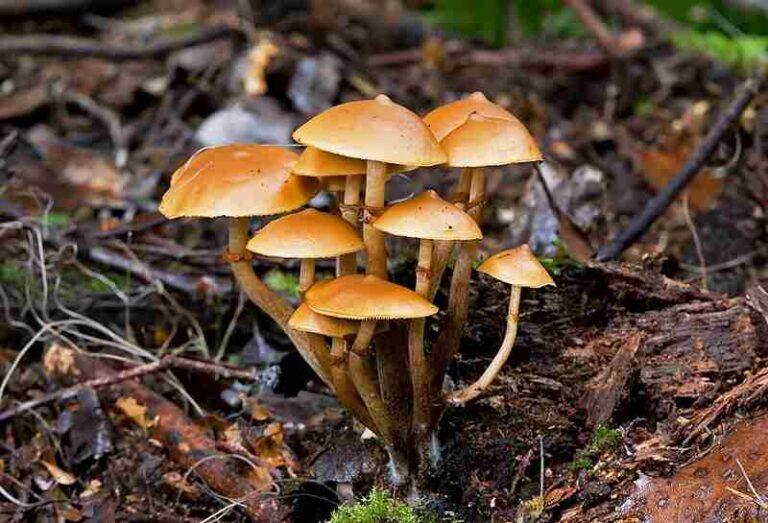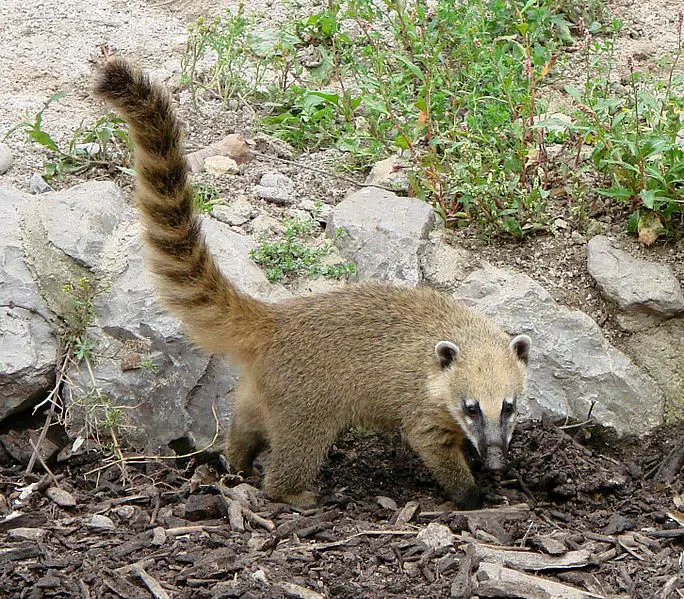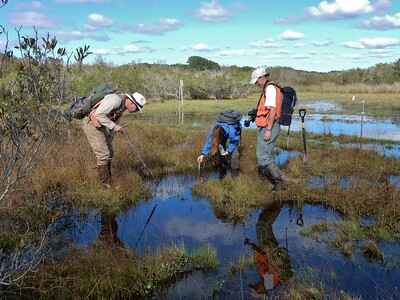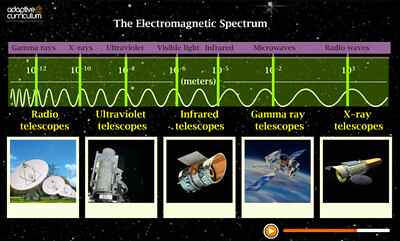7 Methods of Organic Farming Explained
Methods of organic farming are; cover cropping, organic mulching, livestock and crop rotation, microbe cultivation, biological control, conservation tillage, and waste conversion.
The above listed are also practices of sustainable agriculture, and are applicable in all types of organic farming due to their relevance for establishing ecologic sustainability.
This article discusses the methods of organic farming, as follows;
1). Cover Cropping (as one of the Methods of Organic Farming)
Cover cropping is a prominent method of organic farming which involves the deliberate cultivation of selected crops, for the purpose of soil conservation and productivity optimization.
Through cover cropping, environmental impacts such as soil erosion and mass movement are mitigated [3].
It can be implemented alongside contour farming on sloping land, to reduce the risk of landslides.
Aside erosion and landslide control, cover cropping is also important as a means to control weed growth on farms [4]. This is because cover crops are typically competitive, and reduce the survival rate of weeds.
With regards to soil fertility, cover cropping helps to improve soil characteristics like porosity, particle distribution, aeration, and moisture retention.
Leguminous cover crops facilitate nitrogen fixation. Carbon sequestration is also facilitated by fibrous cover crops, implying that the method helps in mitigating climate change.
By improving soil characteristics, cover cropping enhances the growth of soil organic populations, including earthworms, insects and microbes, which further improve the soil.
The cultivation of cover crops is is often implemented as part of schemes for crop rotation [2], which is yet another method of organic farming.
Cover cropping is best practiced in large-scale scenarios, where agricultural land resources are relatively abundant. It is also recommendable in areas that are susceptible to flooding, erosion, and desertification.

2). Organic Mulching
Organic mulching is the use of organic materials to form a protective covering for agricultural soil [12].
It is one of the methods of organic farming and has the advantage of being compatible with several other sustainable farming practices.
Various types of biomass can be used as organic mulch. This includes sawdust, wood chippings, straw, hay, leaves and peat [6].
Organic mulching is an effective means of mitigating soil leaching. It helps protect the soil from agents of erosion, and increases moisture retention. The organic mulch can also supply nutrients to soil as it undergoes biodegradation, thereby leading to increase in soil fertility [7].
Small and large scale agricultural projects can make use of organic mulching to conserve soil and increase crop yield.

3). Crop and Livestock Rotation (as one of the Methods of Organic Farming)
In organic farming, both crops and livestock can be cultivated and grown according to a cyclic scheme. This is called ‘rotation’.
Crop rotation in organic farming is simply the sequential cultivation of different types of crops on a given farm. The crops may be rotated either by planting different types in different sections of the farm, or one type of crop can be planted across the entire farm within a given period.
An advantage of crop rotation is that it can be implemented simultaneously with other organic farming methods like mulching and cover cropping. Crop rotation enhances yield and sustainability by reducing the rate at which a particular group of nutrients are consumed. Rotation also makes it difficult for weeds, pests and diseases to stabilize on the farm [10].
Livestock rotation mostly occurs in the form of grazing rotation; which is the periodic shifting of grazing locations for livestock in a given area of land.
It is a good way to mitigate the risks of excessive compaction, vegetation loss and soil degradation, and ensures that the ecological equilibrium of the environment is not significantly affected.
Alternatively, livestock rotation may involve an entire change of the species of livestock on a periodic basis.
Rotating crops and livestock can be done simultaneously on integrated farms, to achieve sustainable production.
4). Microbe Cultivation
Microbe cultivation is an aspect of organic farming, and may occur either in-situ or ex-situ.
In-situ microbe cultivation or microbial farming is the deliberate implementation of measures to boost the growth and reproduction of microorganisms like bacteria and fungi, on the farm.
Ex-situ microbe cultivation is carried out in the laboratory.
Microbe species can be carefully selected to help enhance the growth of specific crops. These include nitrogen-fixing bacteria, and highly-active microbes for soils in which rapid biodegradation is needed.
Microbe cultivation can be implemented as a measure of environmental remediation for degraded soils, especially where the pollutant(s) is composed of biodegradable materials [11].
By increasing soil biodiversity, microbe cultivation increases the rate of processes that make the soil more fertile, resulting in increased yield.
5). Biological Control (as one of the Methods of Organic Farming)
Biological control in organic farming simply refers to the use of natural process and biological organisms to address agricultural problems like pests and diseases.
It is an integral aspect of organic farming, as it reduces the reliance on potentially-toxic materials like chemical pesticides and herbicides.
Biological control is effective for reducing insect pests, weeds and diseases [1].
The tools that may be used for control include cover crops, other competitive plants, and animals.
The animals used are usually predatory animals, which depend on farm pests like insects for food. By introducing such organisms to the farm, pests can be controlled without any form of environmental degradation or energy waste, and without disrupting the natural flow of bioenergy in the ecologic pyramid.
Aside the direct control of agricultural pests and diseases, organic methods help to increase biodiversity on the farm, which is essential for production.
6). Conservation Tillage
The idea behind conservation tillage as a method of organic farming, is to minimize the disturbance of soil in order to preserve its structure, fertility and productivity [9].
Conservation tillage may involve absolute avoidance of cultivation, or minimal cultivation of soil. In both cases, the soil is conserved by reducing mechanical disruption, which could cause unfavorable changes in soil structure and productivity.
It is fairly common to combine organic mulching with conservation tillage, by using crop residue as a protective covering and nutrient-supplement for the soil.
In order to plant crops, small grooves or trenches may be drilled into the ground at the position(s) where planting is to be carried out.
Conservation tillage has multiple advantages like erosion mitigation, water conservation, porosity improvement, and fertility enhancement through the accumulation of organic matter [5].
7). Waste Conversion (as one of the Methods of Organic Farming)
Waste conversion in organic farming refers to the recycling of waste materials produced on an organic farm.
The most common measure for organic waste recycling is composting. Because agricultural waste is mainly composed of biomass, it can serve as a source of nutrients to the soil [8].
In composting, naturally-occurring microbes are used to convert agricultural waste to nutrients through biodegradation. As a result, the organic content of the soil is optimized, alongside its fertility and effectiveness as a carbon sink.
Another way to recycle waste in organic farming is by converting agricultural waste materials to livestock feed. This is best suited for waste materials that are comprised mostly of plant biomass.
Lastly, waste can be recycled through waste-to-energy and biomass conversion processes like anaerobic digestion, torrefaction, pyrolysis and gasification. These processes transform waste materials to useful bioenergy, while producing other materials like biochar that are used as soil amendments.
Conclusion
Methods of organic farming are;
1. Cover Cropping
2. Organic Mulching
3. Crop and Livestock Rotation
4. Microbe Cultivation
5. Biological Control
6. Conservation Tillage
7. Waste Conversion
References
1). Barreto, R. W.; Ellison, C. A.; Seier, M.; Evans, H. C. (2012). “Biological control of weeds with plant pathogens: Four decades on.” Available at: https://www.semanticscholar.org/paper/Biological-control-of-weeds-with-plant-pathogens%3A-Barreto-Ellison/d2df6186561a449ef5b8dadcac296da6050a5840. (Accessed 12 October 2022).
2). Florentin, M. A.; Peñalva, M. M.; Calegari, A.; Derpsch, R. (2020). “Green manure/cover crops and crop rotation in Conservation Agriculture on small farms.” Available at: https://www.fao.org/publications/card/en/c/5005bf29-fda0-5d85-8f5e-ab4342e69483/. (Accessed 12 October 2022).
3). González, I. G.; Fernández, C. H.; Gabriel, J. L.; Alonso-Ayuso, M.; Quemada, M. (2018). “Cover crops to mitigate soil degradation and enhance soil functionality in irrigated land.” Geoderma 322:81-88. Available at: https://doi.org/10.1016/j.geoderma.2018.02.024. (Accessed 12 October 2022).
4). Lemessa, F. (2015). “Cover Crops as a Means of Ecological Weed Management in Agroecosystems.” Journal of Crop Science and Biotechnology 18(2):133-145. Available at: https://doi.org/10.1007/s12892-014-0085-2. (Accessed 12 October 2022).
5). Peigné, J.; Ball, B. C.; Roger-Estrade, J.; David, C. (2007). “Is conservation tillage suitable for organic farming? A review.” Soil Use and Management 23(2):129 – 144. Available at: https://doi.org/10.1111/j.1475-2743.2006.00082.x. (Accessed 10 October 2022).
6). Pupalienė, R.; Sinkevičienė, A.; Jodaugienė, D.; Bajorienė, K. (2015). “Weed Control by Organic Mulch in Organic Farming System.” In (Ed.), Weed Biology and Control. IntechOpen. Available at: https://doi.org/10.5772/60120. (Accessed 10 October 2022).
7). Ranjan, P.; Patle, G. T.; Prem, M.; Solanke, K. (2017). “Organic Mulching- A Water Saving Technique to Increase the Production of Fruits and Vegetables.” Current Agriculture Research Journal 5(3):371-380. Available at: https://doi.org/10.12944/CARJ.5.3.17. (Accessed 10 October 2022).
8). Sailila, N.; Bakar, A. A.; Mahmood, N. Z.; Silva, J. A.; Abdullah, N.; Jamaludin, A. A. (2010). “Nutrient Elements of Different Agricultural Wastes from Vermicomposting Activity.” Available at: https://www.researchgate.net/publication/233810325_Nutrient_Elements_of_Different_Agricultural_Wastes_from_Vermicomposting_Activity. (Accessed 12 October 2022).
9). Seitz, S.; Goebes, P.; Puerta, V. L.; Pereira, E. I.; Wittwer, R.; Six, J.; Heijden, M. G.; Scholten, T. (2019). “Conservation tillage and organic farming reduce soil erosion.” Agronomy for Sustainable Development 39(1). Available at: https://doi.org/10.1007/s13593-018-0545-z. (Accessed 12 October 2022).
10). Shah, K.; Modi, B.; Pandey, H. P.; Subedi, A.; Aryal, G.; Pandey, M.; Shestha, J. (2021). “Diversified Crop Rotation: An Approach for Sustainable Agriculture Production.” Advances in Agriculture 2021(2). Available at: https://doi.org/10.1155/2021/8924087. (Accessed 12 October 2022).
11). Sharma, A.; Bhatt, P.; Khati, P.; Gangola, S. (2016). “Microbial Degradation of Pesticides for Environmental Cleanup.” Bioremediation of Industrial pollutants (pp.28). Available at: https://www.ncbi.nlm.nih.gov/pmc/articles/PMC6225238/. (Accessed 12 October 2022).
12). Wang, B.; Niu, J.; Berndtsson, R.; Zhang, L. T.; Chen, X.; Li, X.; Zhu, Z. (2021). “Efficient organic mulch thickness for soil and water conservation in urban areas.” Scientific Reports 11(1):6259. Available at: https://doi.org/10.1038/s41598-021-85343-x. (Accessed 12 October 2022).



